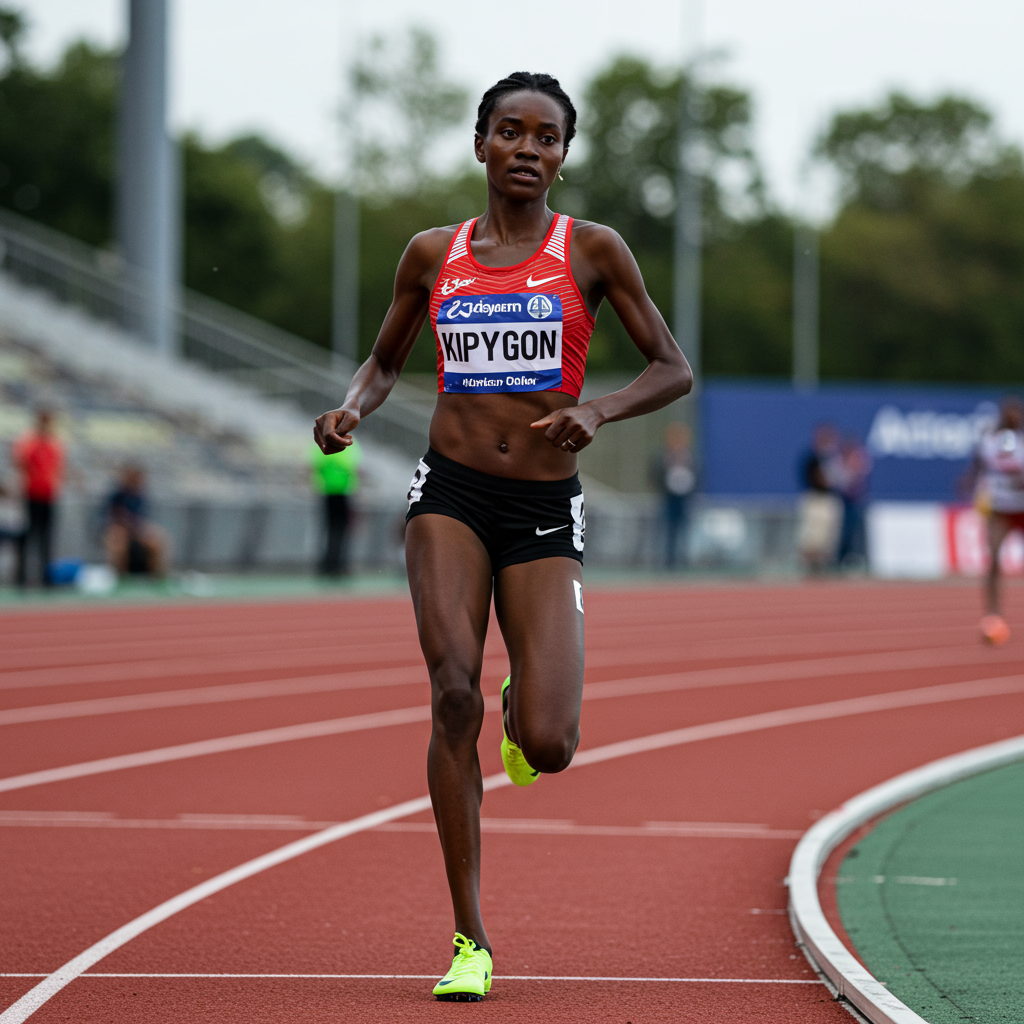Faith Kipyegon’s Bold Bid for the Sub-Four Minute Mile Barrier
In a highly anticipated event in Paris on June 26, 2025, Kenyan track sensation Faith Kipyegon made a determined attempt to achieve one of the most coveted milestones in athletics: becoming the first woman to run a mile in under four minutes. While she didn’t break the historic barrier on this occasion, Kipyegon delivered a stunning performance, crossing the finish line at the Stade Sébastien Charléty in 4:06.42.
This time marked a personal best for Kipyegon and is notably the fastest mile ever recorded by a woman, surpassing her own previous world record of 4:07.64 set in Monaco in 2023. Despite falling short of the ultimate sub-four-minute goal by just over six seconds, her run showcased the immense potential and accelerating progress in women’s distance running.
Why the Time Won’t Be an Official Record
The attempt, a Nike-sponsored exhibition dubbed “Breaking4” and described by the brand as Kipyegon’s “moonshot,” was designed specifically to push the boundaries of human performance rather than adhering strictly to standard competition regulations. As a result, Kipyegon’s remarkable time of 4:06.42 will not be ratified as an official world record by World Athletics.
Several factors contributed to this, including the nature of the event itself being an unlicensed exhibition. Additionally, Kipyegon utilized specialized equipment provided by Nike, such as bespoke racing spikes, an aerodynamic speed suit, and a 3D-printed sports bra, some of which had not been officially verified by the governing body. This extraordinary support system, while crucial to maximizing performance, also meant the conditions were not standard for official record attempts.
The Science and Strategy Behind the Run
Achieving a sub-four-minute mile requires a complex blend of speed, endurance, and strategic execution. For a woman, it has long been considered a mythic barrier, one that some scientific projections, like a paper published in February 2025 in the Journal of Applied Physiology, suggested might not be broken until decades from now, partly due to the shorter history of women’s focused participation in distance running. However, Kipyegon’s attempt underscores how rapidly times are changing.
A key element of the “Breaking4” effort was the meticulous use of pacemakers. Kipyegon was supported by a large contingent of 13 elite runners, including both men and women, strategically positioned around her in a carefully choreographed formation. This team, including prominent athletes like American Grant Fisher, was designed to create an “air pocket” or “shield,” significantly reducing wind resistance – a substantial factor when running at the required pace of around 15 miles per hour. As noted by experts like Rodger Kram, an associate professor emeritus of integrative physiology, effective drafting is paramount, much like it was for Roger Bannister’s historic first sub-four-minute mile in 1954.
Kipyegon also employed cutting-edge technology, including custom spikes and a textured suit designed specifically to minimize aerodynamic drag.
The Race Effort and Kipyegon’s Outlook
The race itself saw Kipyegon run strongly for the initial laps, hitting the halfway point around 2:00.75 to 2:01.7, close to the required pace for sub-four. However, the intense effort took its toll, and she showed visible signs of fatigue in the final half lap.
Upon finishing, Kipyegon collapsed briefly on the track, demonstrating the sheer physical exertion of her attempt. She was attended to by her team, and fellow Kenyan running icon Eliud Kipchoge, her training partner and mentor who was present to support her, held the tape as she finished.
Speaking afterwards, despite her exhaustion, Kipyegon expressed pride in her effort. “Exhausted. I’m tired now, but I feel good. I’ve tried,” she said. She reiterated her belief that the sub-four-minute mile for women is achievable. “I’ve proven that it’s possible,” she stated. “It’s only a matter [of] time. I think it will come… But if it’s not me, it will be somebody else.” Her determination suggests she may pursue the goal again in the future.
A Step Forward for Women’s Running
Faith Kipyegon is already celebrated as arguably the greatest female middle-distance runner of all time, holding three consecutive Olympic gold medals in the 1500 meters (2016, 2020, 2024) and multiple world championship titles. She even won her 2024 Olympic 1500m gold on the same Paris track a month before this mile attempt.
Her “Breaking4” run, while not achieving the ultimate target, significantly lowers the standard for the women’s mile and reinforces the idea that breaking the four-minute barrier is increasingly probable. Just as Eliud Kipchoge’s first attempt to break the two-hour marathon barrier, though unsuccessful, paved the way for his later triumph, Kipyegon’s run is seen as a vital step in pushing the boundaries of what is considered possible in women’s athletics, inspiring future generations of runners, including her own daughter, to aim without limits.




